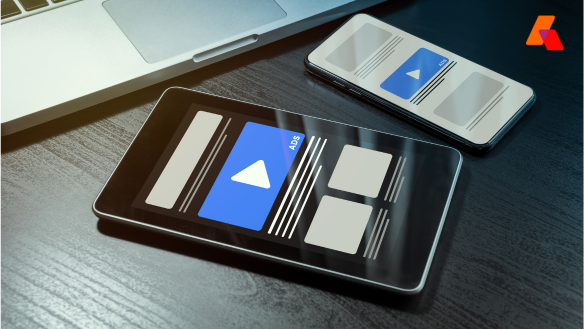Programmatic Advertising – What is it and How Does it Work?
This article discusses Programmatic Advertising, outlining the basics about what it is and how it works. In a future post, we’ll dive into current trends and the future opportunities coming together to shape the future of programmatic.
Programmatic advertising’s effectiveness and efficiency has brought explosive growth, with global spending projected to reach $147 billion by 2023, accounting for 90% of digital display ad dollars.
What is Programmatic Advertising?

Let’s start with the basics. Programmatic advertising uses automated technology to manage the media buying and selling process between advertisers and publishers. Programmatic advertising comes in a number of formats, from guaranteed media buys set at a fixed prices to “real-time” auctions. The thing that makes it programmatic is the technology that facilitates the transaction.
Programmatic advertising has grown significantly in the past decade because:
- Advertisers can easily reach target audiences at scale
- Publishers can sell their inventory automatically
- Buyers and sellers can change or optimize campaigns more easily
Programmatic advertising’s effectiveness and efficiency has brought explosive growth, with global spending projected to reach $147 billion by 2023, accounting for 90% of digital display ad dollars.
How does Programmatic Advertising Work?
Before the rise of programmatic, advertisers and publishers used manual processes that were often long and tedious, involving rounds of negotiations, bidding, and contracts. This process was both time-consuming and inefficient, and often led to wasted ad spend- presenting universal pain-points for larger enterprises and significant barriers to entry for SMBs and mid-market players.
Programmatic advertising solves for a number of manual problems in the old process:
- RFP: advertisers would create a spreadsheet that dictated the details of the media buy and email it to publishers
- RFP responses: publishers would manually create an offer based on the advertiser’s request and email it back
- Order creation: The agreed-upon insertion order was typed up and shared with teams (which may include additional steps to reach a specific target audience segment)
- Campaign delivery: Ad operations teams would input the order into the ad serving system
- Optimization: Ad operations would pull reports and review campaign performance to make changes
Programmatic advertising has empowered advertisers and publishers of all sizes to easily automate these time-consuming tasks, freeing bandwidth so they can concentrate on strategic goals and initiatives that drive their businesses.
Here is the typical journey in the programmatic media buying flow:
- The User: A user clicks on a website or app that has been setup for programmatic.
- The Publisher: The app or website owner makes their ad inventory available for sale through a Supply-Side Platform (SSP)
- The Advertiser: Advertisers create their optimized campaigns and set their targeting criteria through a Demand-Side Platform (DSP)
- The Auction: The DSP places bids on ad impressions on an ad exchange
- Winning Bids: If the DSP wins the auction, the ad is displayed on the publisher’s app or website.
- Conversion: The user clicks on the ad and makes a desired conversion, such as visiting the website, signing up for a demo, or making a purchase
Programmatic advertising has become an essential strategy for advertisers looking to reach their target audiences efficiently and cost-effectively. But with the increased complexity involved in managing new selling processes, media companies are looking to modernize their operations with tools — such as Operative’s AOS – in order to compete effectively into the future. With AOS, they can sell more effectively and simplify ad operations – both of which are needed to power modern media workflows. And with Operative’s STAQ offering, many of the world’s leading media companies gain valuable data-driven insights into their programmatic business. Making the combined software offering a powerful combination to succeed in a programmatic world.


